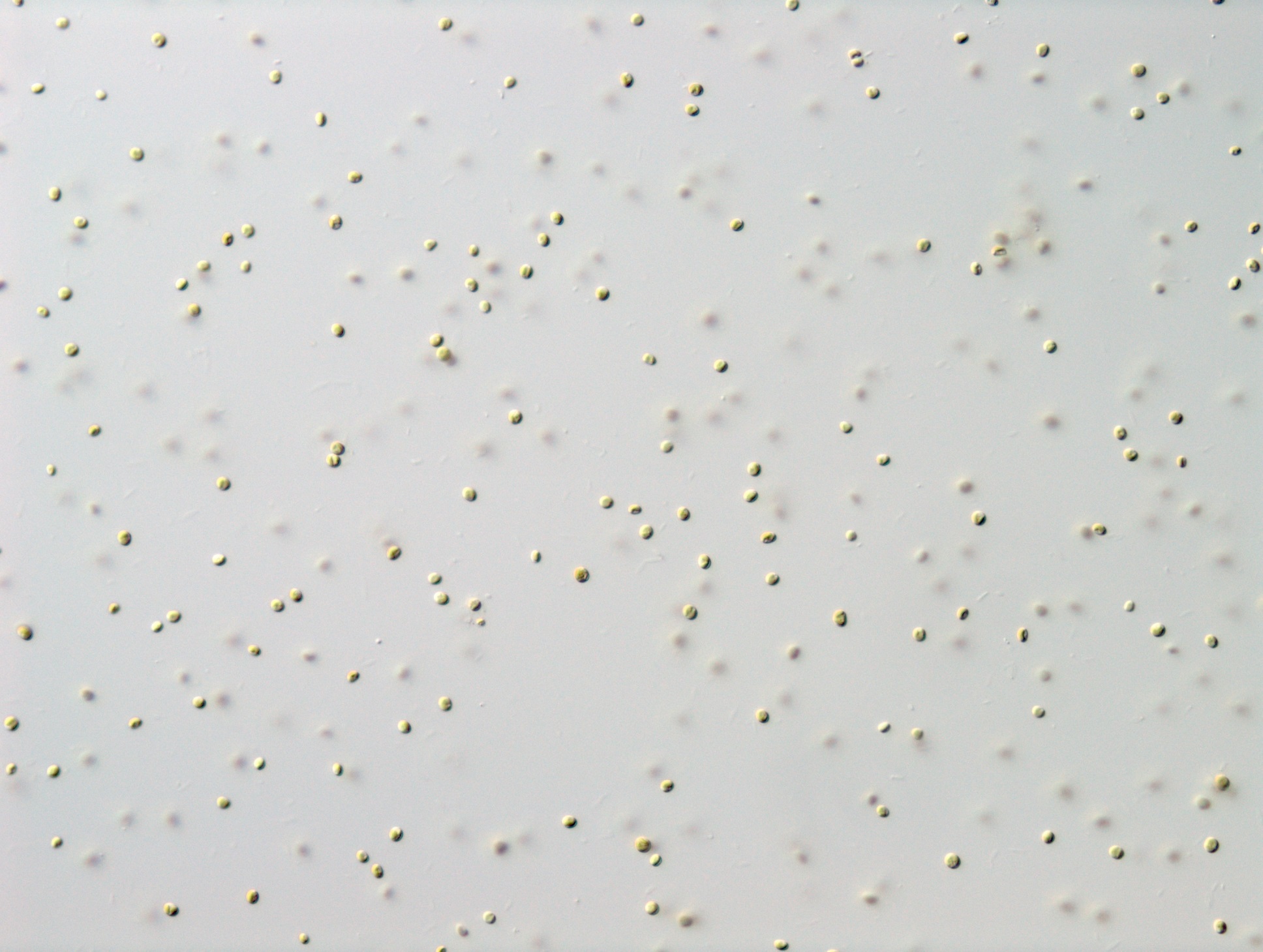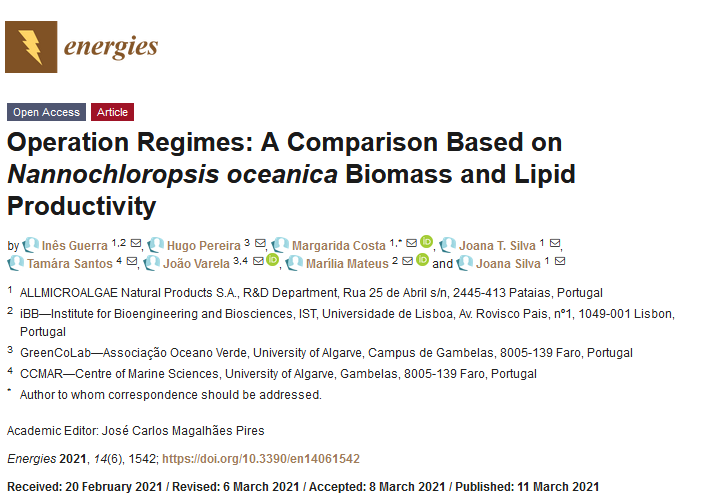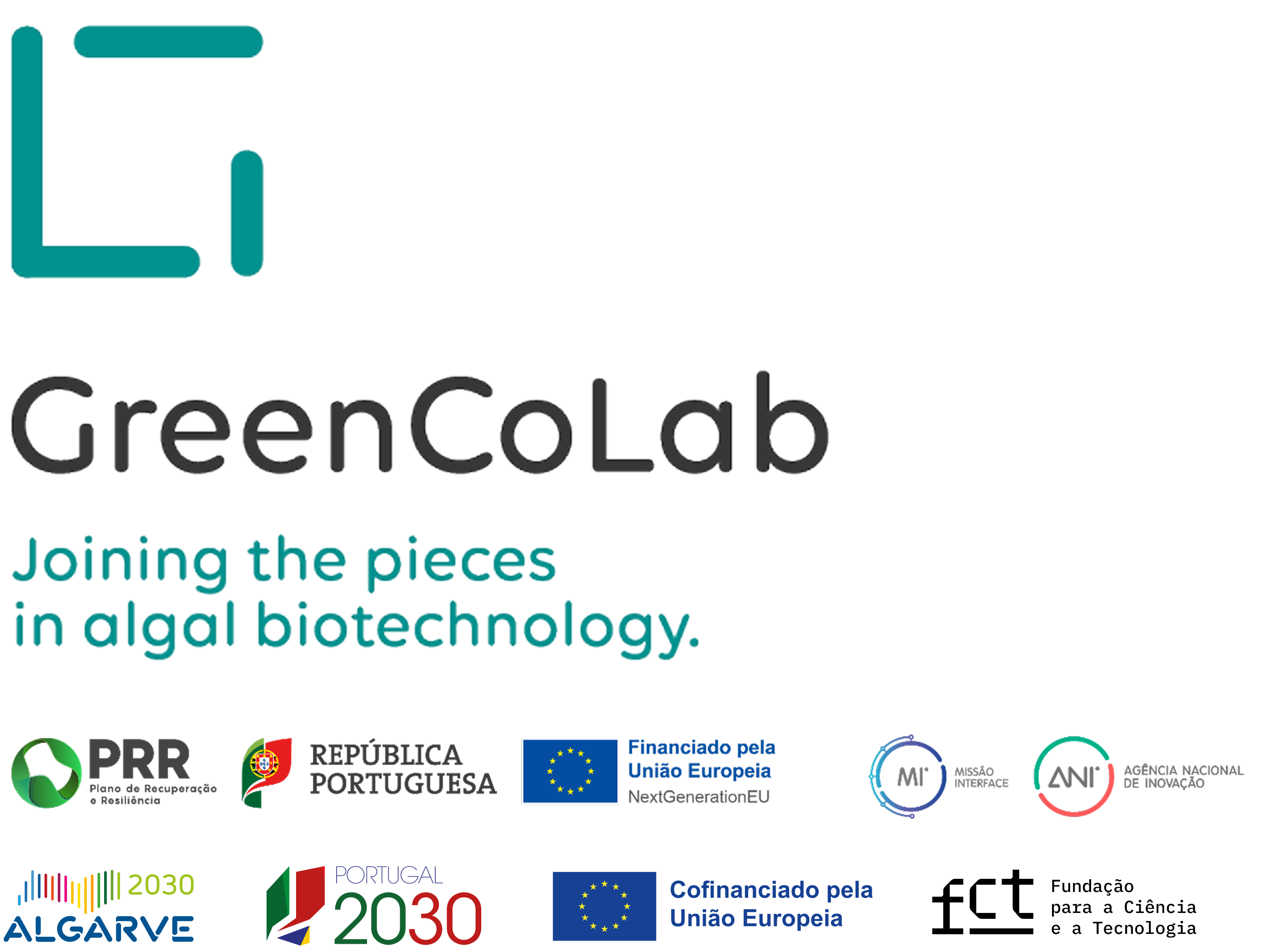

TITLE
Operation Regimes: A Comparison Based on Nannochloropsis oceanica Biomass and Lipid Productivity
JOURNAL
Energies
AUTHORS
Inês Guerra, Hugo Pereira, Margarida Costa, Joana T. Silva, Tamára Santos, João Varela, Marília Mateus and Joana Silva
ABSTRACT
Microalgae are currently considered to be a promising feedstock for biodiesel production. However, significant research efforts are crucial to improve the current biomass and lipid productivities under real outdoor production conditions. In this context, batch, continuous and semi-continuous operation regimes were compared during the Spring/Summer seasons in 2.6 m3 tubular photobioreactors to select the most suitable one for the production of the oleaginous microalga Nannochloropsis oceanica. Results obtained revealed that N. oceanica grown using the semi-continuous and continuous operation regimes enabled a 1.5-fold increase in biomass volumetric productivity compared to that cultivated in batch. The lipid productivity was 1.7-fold higher under semi-continuous cultivation than that under a batch operation regime. On the other hand, the semi-continuous and continuous operation regimes spent nearly the double amount of water compared to that of the batch regime. Interestingly, the biochemical profile of produced biomass using the different operation regimes was not affected regarding the contents of proteins, lipids and fatty acids. Overall, these results show that the semi-continuous operation regime is more suitable for the outdoor production of N. oceanica, significantly improving the biomass and lipid productivities at large-scale, which is a crucial factor for biodiesel production.



